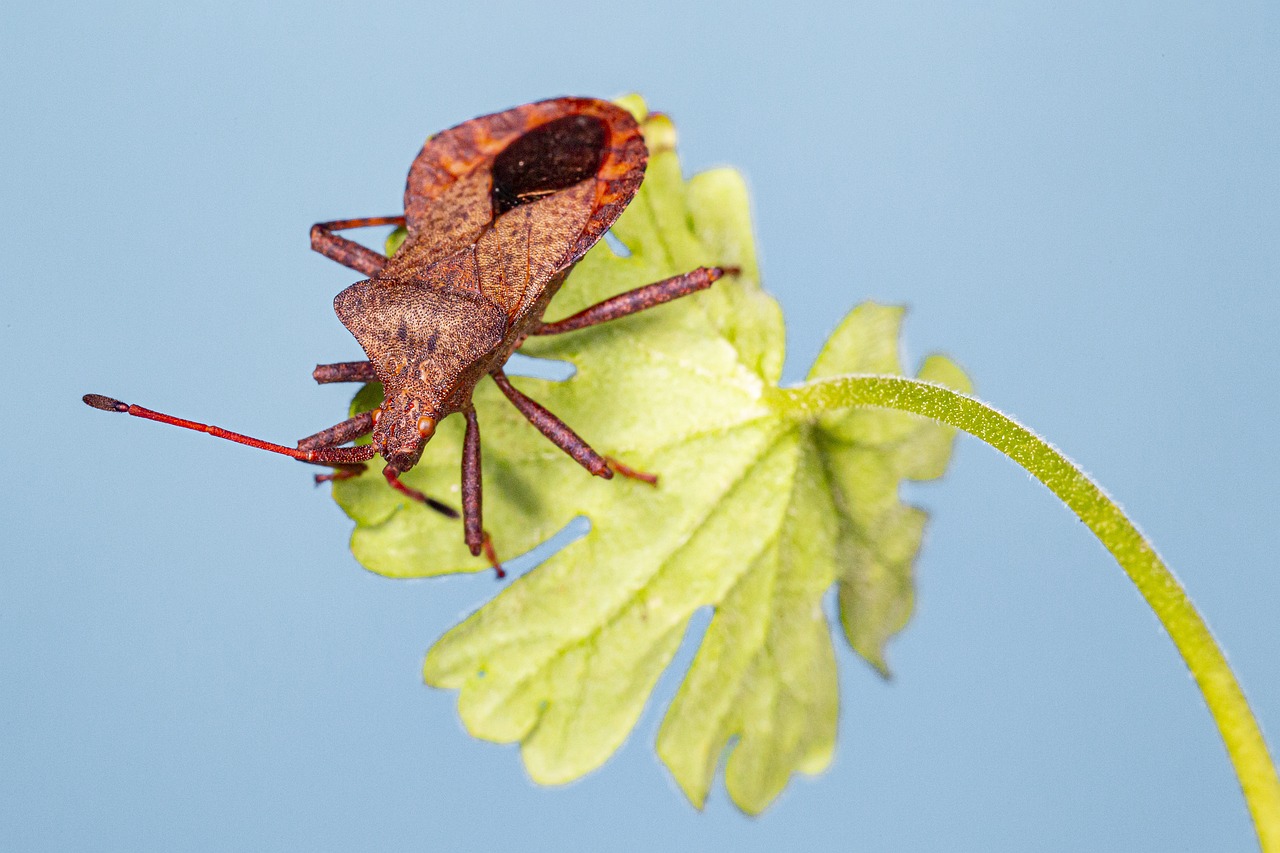The Dock Bug (Coreus marginatus) is a member of the Coreidae family, known as the leaf-footed or squash bugs. It is a distinctive species of true bug that can be found across Europe and parts of Asia. The Dock Bug is notable for its unique appearance and feeding behavior.
Physical Description
- Size: Adult Dock Bugs typically measure between 10 to 14 mm (0.4 to 0.6 inches) in length.
- Coloration: They generally have a brown or reddish-brown body with a somewhat flattened shape. The coloration can be variable, but they often exhibit a somewhat mottled or speckled appearance.
- Body Features: The bug has a broad, flat body with a distinctively rough or granular texture. The legs and antennae are relatively long compared to the body size. One of the most distinctive features is the widened, leaf-like structure of the hind legs, which can give the bug a somewhat “leaf-footed” appearance.
- Antennae: The antennae are long and segmented, helping with sensory functions.
Distribution and Habitat
- Range: The Dock Bug is found across Europe and extends into parts of western Asia. It is especially common in temperate regions.
- Habitat Preferences: It inhabits a variety of environments, including gardens, woodlands, meadows, and areas with abundant vegetation. The Dock Bug is often associated with its preferred host plants, which include various species of dock (Rumex) and sorrel (Oxalis).
Behavior and Diet
- Feeding: The Dock Bug is a sap-sucking insect. It feeds on the sap of plants, using its piercing-sucking mouthparts to extract fluids. It particularly favors plants in the dock and sorrel families, though it can also feed on other herbaceous plants.
- Habitat Use: The bug is often found resting on or near its host plants. It tends to be more active during the warmer months of the year.
Reproduction and Lifecycle
- Mating: Mating occurs during the warmer months, usually in spring and summer. The males engage in courtship displays to attract females.
- Eggs: Females lay eggs on the host plants or nearby vegetation. The eggs are typically laid in clusters and are small and oval-shaped.
- Nymphs: The eggs hatch into nymphs, which resemble miniature adults but lack fully developed wings. Nymphs undergo several molts as they grow, gradually acquiring the adult features.
- Adults: The adult Dock Bugs emerge after the final molt and continue feeding and reproducing until the end of the season.
Ecological Role
- Plant Interaction: As sap-suckers, Dock Bugs can affect the health of their host plants by extracting plant fluids. While they are not usually major pests, their feeding can sometimes lead to reduced plant vigor or minor damage.
- Predator and Prey: They are part of the food web, serving as prey for various predators, including birds and other insects.
Conservation Status
- Status: The Dock Bug is not currently listed as threatened or endangered. It is a common and adaptable species with stable populations across its range. Its presence is usually an indicator of healthy, diverse vegetation in its habitat.
Summary
The Dock Bug (Coreus marginatus) is a distinctive and common true bug known for its unique appearance and feeding habits. Its association with dock and sorrel plants and its role in the ecosystem as a sap-sucking insect highlight its ecological importance. While not a major pest, it contributes to the dynamic interactions within its habitat.nagement. Understanding its biology and behavior is essential for developing effective control measures to minimize its impact on crops.
Views: 1326
Subscribe to the newsletter:
